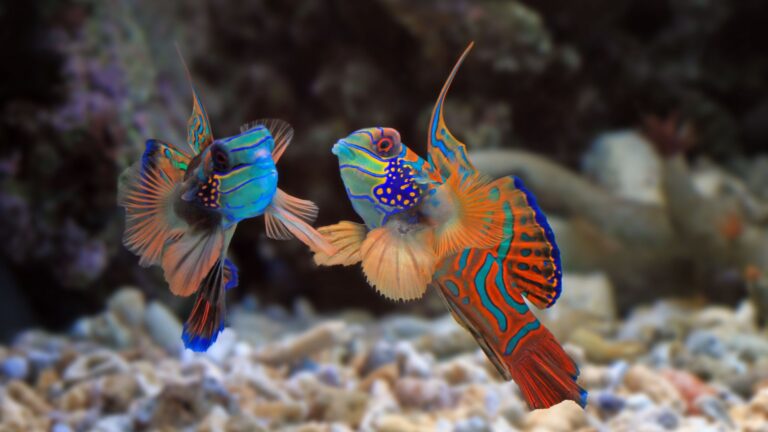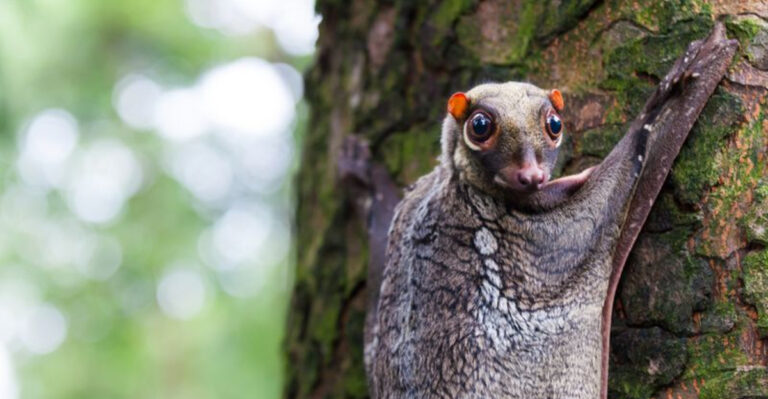Orca Whales: Inside The Biology Of The Ocean’s Top Predator
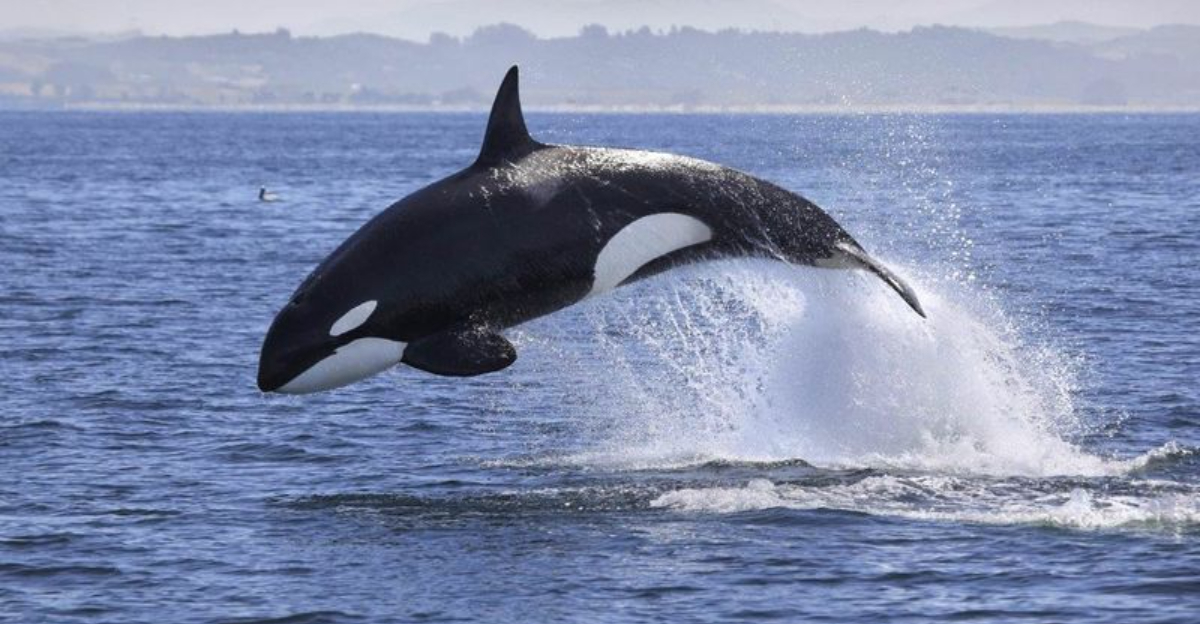
Imagine a sleek black and white torpedo cutting through ocean waves with intelligence rivaling our own. Orcas, often called killer whales, are actually the largest members of the dolphin family.
These remarkable creatures dominate the marine food chain with their hunting prowess, complex social structures, and surprising biological adaptations.
1. Masters Of Disguise In Black And White
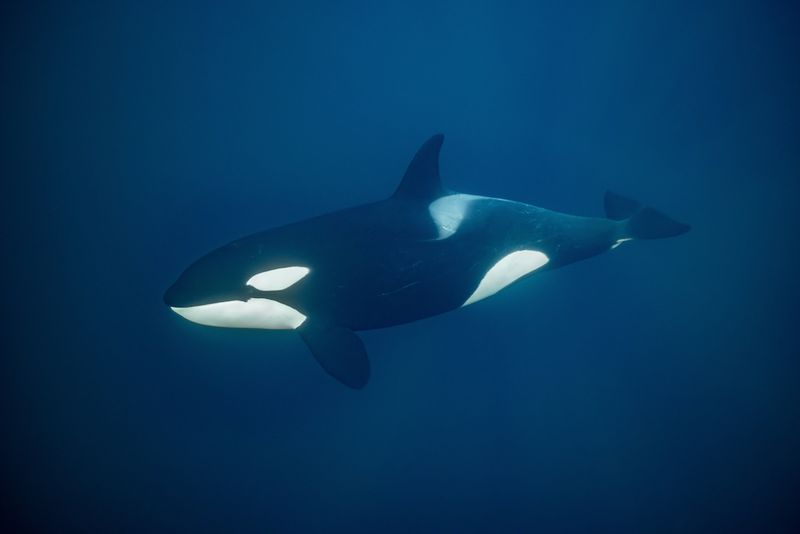
That distinctive tuxedo pattern isn’t just for looks! The black-and-white coloration creates a clever optical illusion called disruptive coloration.
From above, their dark backs blend with the deep ocean. From below, their white bellies disappear against the bright surface. This camouflage helps them sneak up on prey from any angle.
2. Brain Power That Rivals Humans
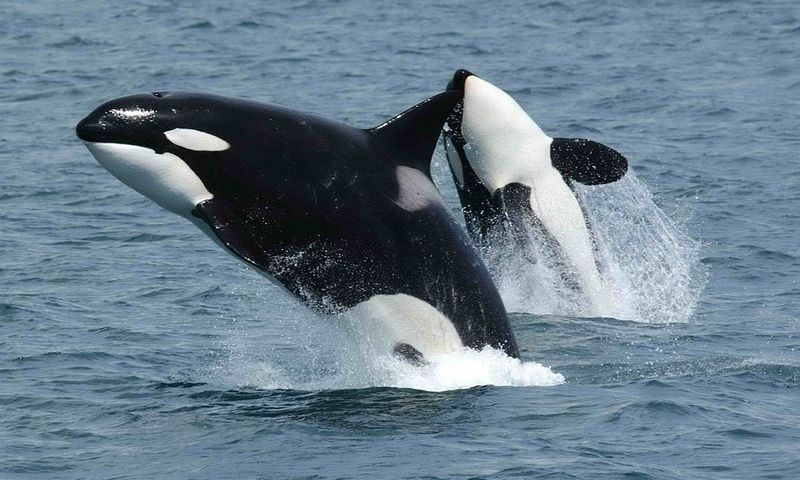
Would you believe orcas have brains that weigh around 15 pounds? Their impressive gray matter contains specialized cells for emotional processing and social cognition.
Scientists have documented orcas using tools, solving problems, and even developing distinct cultural traditions. Their intelligence might be on par with great apes and possibly even humans in some aspects.
3. Echolocation: Nature’s Sonar System

Forget submarine technology – orcas mastered sonar millions of years ago! By producing clicks that bounce off objects, they create detailed 3D mental maps of their surroundings.
Their echolocation is so precise they can detect fish hiding under seafloor sediment. Each click tells them the size, shape, density, and even the internal structure of whatever they’re tracking.
4. Social Structures More Complex Than Many Civilizations
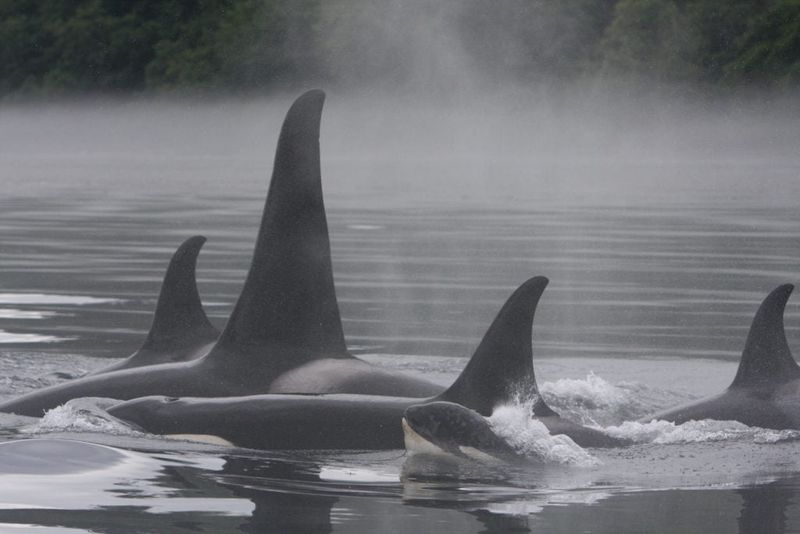
Family means everything in orca society. These mammals form tight-knit pods led by matriarchs who can live into their 90s, passing down hunting techniques and cultural knowledge through generations.
Each pod develops its own unique vocalizations – essentially a family dialect! Some populations maintain stable social networks that rival the complexity of human tribal systems.
5. Specialized Hunters With Cultural Differences
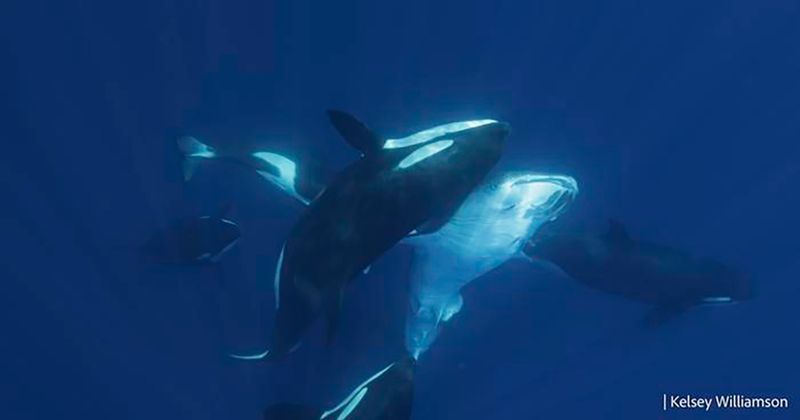
Talk about picky eaters! Different orca populations specialize in specific prey and hunting techniques, passed down through generations like cherished family recipes.
Some chase seals onto beaches, while others create waves to wash them off ice floes. Resident pods focus on fish, transients hunt mammals, and offshores target sharks – each with specialized skills for their chosen menu.
6. Biological Heating System For Arctic Waters

Orcas laugh at polar plunges! Their specialized circulatory system includes a countercurrent heat exchange that prevents body heat from escaping through extremities.
Blood vessels carrying warm blood from the core wrap around vessels returning cold blood from fins and flukes. This natural wetsuit lets them comfortably swim in near-freezing waters that would harm humans in minutes.
7. Communication That Rivals Human Language
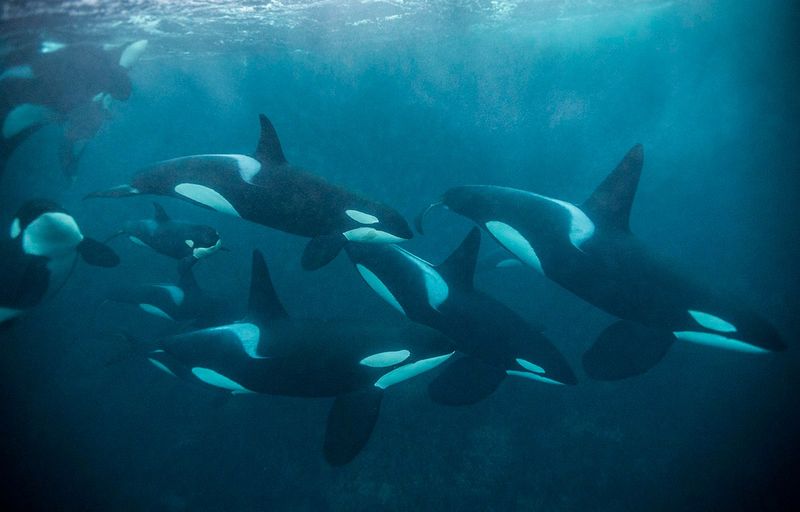
Chatty by nature, orcas produce an impressive repertoire of clicks, whistles, and pulsed calls that serve as a sophisticated communication system.
Each pod develops distinct vocal patterns – essentially dialects – that help members recognize their family. Scientists have identified over 30 discrete call types with specific meanings, suggesting communication complexity approaching language.
8. Sleeping With Half A Brain
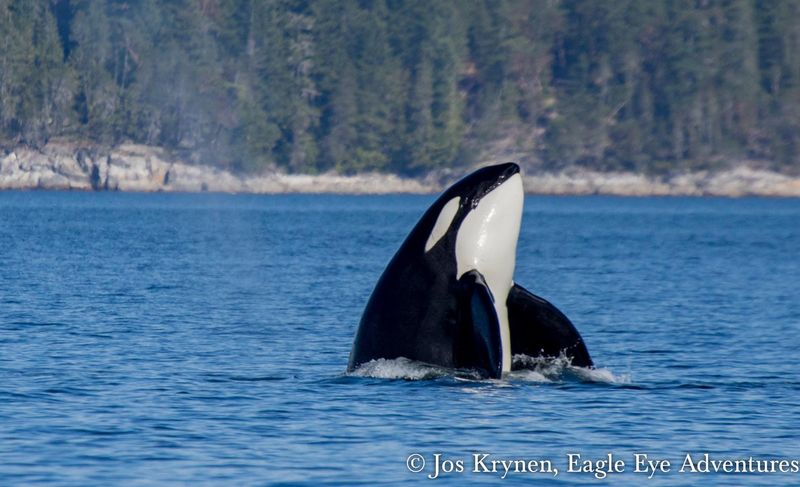
Ever tried to sleep while swimming? Orcas manage this feat through unihemispheric sleep – resting half their brain while keeping the other half alert to control breathing and swimming.
They alternate which hemisphere sleeps, ensuring they never fully lose consciousness. Young calves and their mothers synchronize their sleep patterns, with babies often sleeping while swimming alongside their vigilant moms.
9. Teeth Designed For Precision Hunting
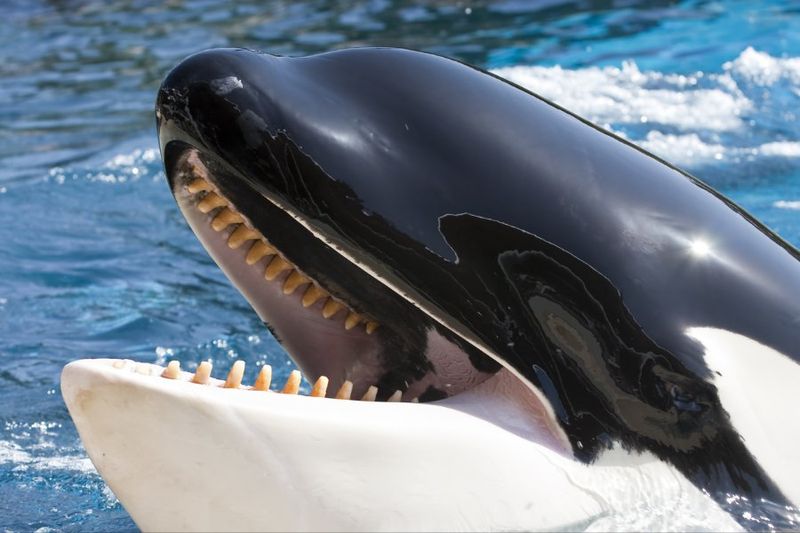
Sporting up to 56 conical teeth measuring 4 inches long, orcas have dental equipment perfectly adapted for their predatory lifestyle. Unlike shark teeth, orcas’ don’t replace lost chompers.
Their powerful jaws exert over 19,000 pounds of pressure per square inch – enough to crush a bowling ball! Yet they can also delicately pluck fish from lines without damaging the gear.
10. Incredible Endurance Athletes

Marathon swimmers make Olympic athletes look lazy! Orcas regularly travel 75-100 miles daily, cruising at speeds of 3-4 mph but capable of bursts up to 30 mph when hunting.
Their streamlined bodies and powerful muscles let them dive 1,000 feet deep and hold their breath for up to 15 minutes. Some populations migrate thousands of miles annually between feeding and breeding grounds.
11. Heart Rate Control Masters
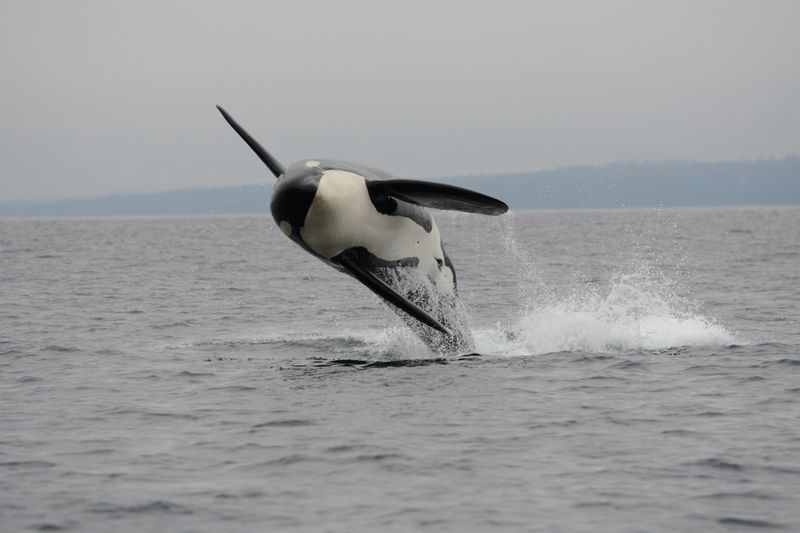
Orcas possess remarkable cardiovascular control that would make any meditation guru jealous. When diving, they can slow their heart rate from 60 beats per minute to just 30.
This bradycardia conserves oxygen and redirects blood flow to vital organs. Their specialized myoglobin-rich muscles store oxygen more efficiently than any land mammal, allowing for those extended deep dives.
12. Specialized Blubber With Multiple Functions

More than just insulation, orca blubber serves as a food reserve, buoyancy control system, and even streamlining mechanism. This specialized fat layer can be up to 3 inches thick.
Unlike human fat, orca blubber contains structural proteins that maintain shape under pressure. It also stores vitamins and helps filter toxins from their system – essentially functioning as a combination winter coat, pantry, and liver.
13. Hydrodynamic Design That Engineers Envy

Naval architects study orcas to improve ship designs! Their perfectly streamlined bodies minimize drag while maximizing propulsion through water.
Special skin features include tiny ridges that reduce turbulence and specialized oil that decreases friction. Their dorsal fin, reaching up to 6 feet in males, acts as a stabilizer while their powerful flukes provide thrust with astonishing efficiency.
14. Sensory Perception Beyond Human Comprehension

Experiencing the world through an orca’s senses would blow your mind! Besides echolocation, they possess extraordinary vision both above and below water, detecting prey in near-darkness.
Their hearing captures sounds between 0.5-120 kHz (humans top out at 20 kHz). Some evidence suggests they might sense Earth’s magnetic field for navigation, explaining their precise long-distance migrations across featureless ocean expanses.



